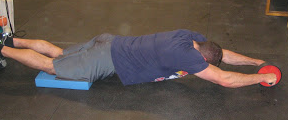
Mid-Week Movement Miscellany
With the launch of my new podcast, I’ve been a bit quiet on the blogging front. However, I’ve got plenty of thoughts rattling around in my brain, so I thought I’d pull together an article on the topic. Heck, we might even make this a regular series. Here goes…
1. On average, female athletes respond differently to eccentric stress than male athletes do.
Last year, I wrote a blog (Making Movement Better: Duct Tape or WD40?) that touched on the fact that many pitchers lose range of motion at the shoulder and elbow as adaptations to the crazy high eccentric stress experienced during pitching. I also was careful to note that not everyone loses range of motion; in fact, some athletes gain motion (become more unstable).
Perhaps unsurprisingly, research in the softball pitching world shows that females don’t lose range-of-motion following softball pitching even though they’re still encountering noteworthy eccentric stress. Females are more likely to be hypermobile, so it makes sense that they become more unstable than they do “tight.” In short, you probably aren’t going to have to work as hard to gain ROM in softball pitchers; your efforts are better directed at regaining neuromuscular control with low-level stabilization exercises.
2. Reaching exercises should drive thoracic flexion and scapular upward rotation, but not necessarily pec recruitment.
On a recent Instagram Q&A, I received the question (paraphrased), “How can I get better scapular contact on the ribs during reaches without too much pec recruitment?” Here was my answer:
3. The best coaching cue for an exercise might just be to do a different exercise.
Also on that Q&A, I got an inquiry about what to do with low back pain due to excessive arching at the bottom of an ab wheel rollout. The answer was pretty simple: regress the exercise; you aren’t ready for ab wheel rollouts.
With anterior core exercises like this, it works a bit like a seesaw: the further the arms go away from the body, the harder the exercise feels (imagine moving a little kid to the end of a seesaw; his weight doesn’t change, but the amount of force at the other end of the seesaw needed to offset him does simply because of his positioning). When an individual dumps into anterior pelvic tilt/lordosis (excessive arching) as the arms get further away from the body on a rollout, it’s one means of shortening that distance. And, it allows the individual to hang out on the passive restraints on the posterior aspect of the spine instead of using active muscular control to create stability.
A better option would be a stir the pot, stability ball rollout (if you don’t go DOWN as far, you don’t go OUT as far), or even just a regular prone bridge. These regressions are easy inclusions that are tremendously helpful when dealing with less trained individuals or athletes with long limbs (and spines).
If you’re looking to learn a bit more about this topic, I’d encourage you to check out my resource, Understanding and Coaching the Anterior Core. This seminar presentation is a thorough tutorial on how to best coach and program these invaluable exercises.


